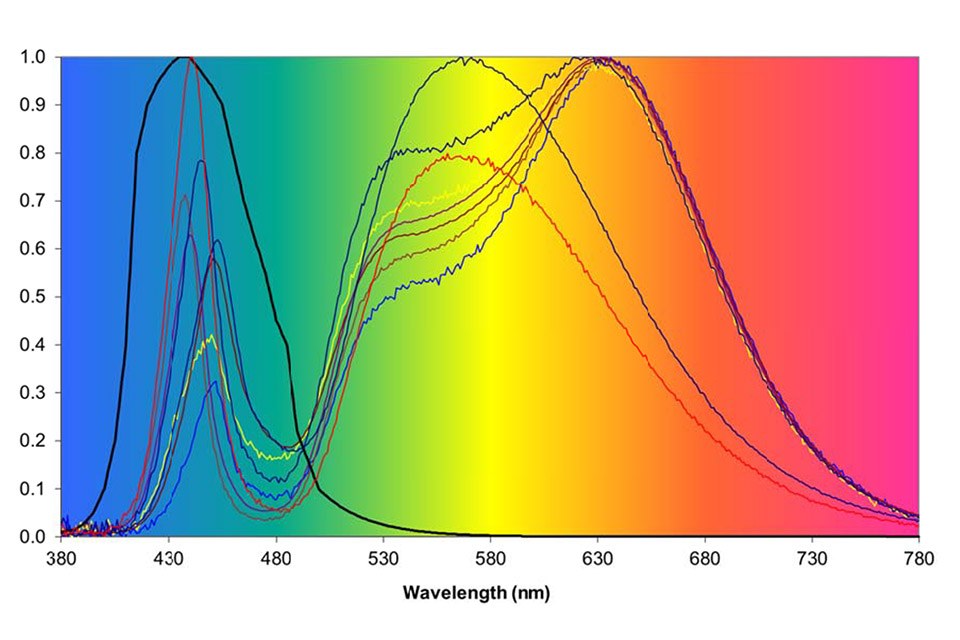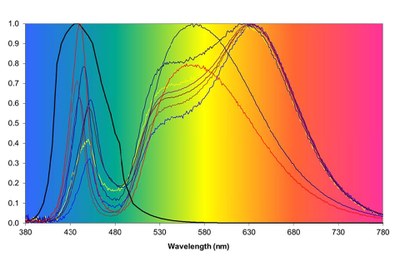IEA Issues Final Report on Potential Health Issues Related to Solid-State Lighting
Recently, the governments of ten countries announced the publication of a comprehensive review of the current literature relating to human health impacts of solid-state lighting (SSL). This review evaluates whether energy-efficient LED systems are a safe light source to illuminate our homes, buildings and outdoor areas. The review concluded that SSL technology is not expected to have more direct negative impacts on human health with respect to non-visual effects than other lighting technologies. For electromagnetic fields, human exposure emitted by SSL products does not appear to be a critical issue as their magnitude is generally much smaller than those corresponding to discharge lamps or certain household appliances. The report also provides advice on flicker and glare.
The International Energy Agency’s (IEA) Energy Efficient End-Use Equipment (4E) Annex on SSL (SSL Annex) works to assist governments of member countries in promoting SSL as an effective means to reduce energy consumption worldwide. Starting in 2011, the SSL Annex launched a study to review all of the major health-related literature associated with LED lighting. The purpose of this work was to prepare a literature review for policy makers that determines whether or not SSL products are at least as safe as the products they intend to replace.
“Over the last several years, the SSL Annex conducted a study of the published literature of SSL on human health” said Dr. Peter Bennich, chairman of the SSL Annex’s Management Committee and representative of the Swedish Energy Agency, one of the Annex’s member countries. “The study evaluated electrical risks, exposure to electromagnetic fields, glare, photobiological hazards, light flicker and non-visual effects of light. It provides a detailed review of these topical areas, and thereby gives decision makers important information that they can apply in the policy context of LED lighting.”
Regarding electrical risks, the report concluded that electrical safety of SSL products is appropriately addressed through compliance with existing international electrical safety standards. For electromagnetic fields, the experts found that human exposure emitted by SSL products is not a critical issue as their magnitude is generally much smaller than those corresponding to discharge lamps or certain household appliances.
On glare, it is recognised that glare can be a critical issue in SSL products. The research recommends that the maximum luminance of the SSL finished products be specified, whether the products incorporate visible LED point sources or not. The luminance ratio between the light source and the background should be computed and adapted to each lighting installation according to visual ergonomics criteria.
For photobiological hazards, the report found that safety assessments should be carried out for all SSL devices using the standard CIE S009 / IEC 62471, and following the guidelines of IEC TR 62778, LED manufacturers should declare the risk group of the product. On light flicker, the modulation of optical output from a light source, this can cause discomfort or worse, induce seizures in patients who suffer from photosensitive epilepsy. Some LED lamps were found to display no flicker while other devices reach the maximum percent flicker value of 100%. It is recommended that mandatory maximum values be set to limit flicker in the SSL products.
Finally, non-visual effects of light were also studied, as all light sources have a broad range of non-visual effects that should be taken into account for the design and the use of lighting systems. “LEDs are very flexible in terms of emission spectrum, ranging from coloured light to white light. As a consequence, LED devices are now used by physicians to treat certain conditions by controlling the non-visual effects of light – called phototherapy” said Dr. Christophe Martinsons of the Centre Scientifique et Technique du Bâtiment (CSTB) in France, and lead author of the report. “And in the future, combining both a better understanding of the non-visual effects of light with the availability of spectrally tunable LED devices, should result in applications of phototherapy for the treatment of health conditions.”
In comparison with the other lighting technologies, the SSL technology is not expected to have more direct negative impacts on human health with respect to non-visual effects. However, SSL may indirectly be responsible for an overall increase of light exposure, thus it is recommended to preserve a dark nocturnal environment while maintaining a suitable exposure level during daytime through a combination of daylight and artificial lighting.
For more details, please download the "Potential Health Aspects Report"
About the SSL Annex:
With the 2013 IC and other work, the SSL Annex works internationally to support efforts at a national and regional level by addressing the main challenges with SSL technologies. The Annex member countries believe that there are significant advantages in engaging in an international collaboration in order to develop a consensus on harmonised approaches to SSL performance and quality. Sponsoring governments of the SSL Annex include Australia, Denmark, France, Japan, Korea, the Netherlands, Sweden, the United Kingdom and the United States. China also participates as an expert member of the SSL Annex. The work of the SSL Annex spans a wide range of initiatives which can be found on the Annex’s website (http://ssl.iea-4e.org/), including guidance for policy makers, quality and performance tiers and support for laboratory accreditation.


